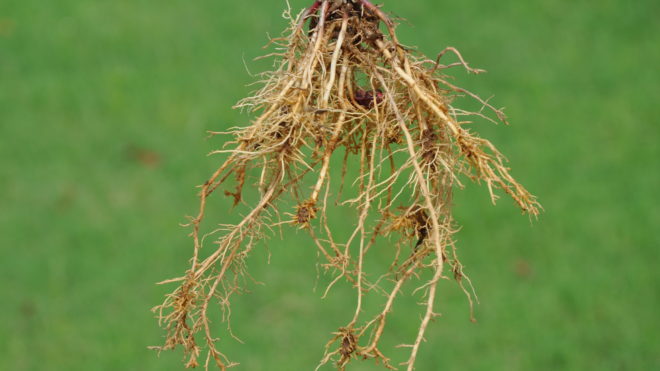Often, when farmers hear the word nematodes, their minds gravitate towards soybeans; however, there are multiple plant-parasitic nematodes that cause serious damage to the corn plant. The level of injury and yield reduction to the corn crop will depend on the species of nematode present as well as the population of those nematodes; other in-season plant stresses exacerbate nematode pressure. Over the past decade, we have seen a shift to more corn acres, which ultimately makes these nematodes even more important to understand.
Distribution and Damage of Corn Nematodes
Nematodes are microscopic worms that live in the soil; however, not all nematodes feed on plants. Nematodes that feed on plants are divided into two groups: endoparasitic nematodes, which feed only inside the roots, and ectoparasitic nematodes, which feed on the outside of the roots. Many corn pest nematodes species can be found in almost all soil types. Sting and need nematodes tent to gravitate towards more coarse-textured soils.
Many corn nematodes are native to the Midwest, as they once fed on prairie grasses, and now they feed on corn planted on those acres. Most nematodes can maintain their soil populations even in a corn-after-soybean rotation. However, populations tend to build on continuous corn acres.
Symptoms:
Above-Ground: Thinned plant stands, stunted yellow plants, small ears, and reduced kernel size.
Below-Ground: Swollen roots or a lack of fine root hairs, black or brown necrotic spots on the otherwise white root tissue.
Yield impacts from nematode feeding can be as high as 10 to 20%; however, a 2 to 10 Bu./A. reduction can be common, making damage hard to detect.
Sampling Methods
To better understand the nematode species and population present, soil sampling is vital. Sampling should be done during the growing season, usually targeting the V6 timeframe. Sampling in sandy soils should take place earlier than in fine-textured soils. In sandy, coarse-textured soils, the nematodes (typically sting and needle nematodes) tend to travel deeper into the soil profile as the season progresses, making early sampling more effective.
- Probe at an angle through the root zone at least 8 to 12 in. deep
- Collect 20 or more cores
- Collect three to four plant roots to be sent along with the soil (to screen for endoparasitic nematodes)
- Double bag the samples with a zip lock bag (bag the roots and soil samples separately)
- Refrigerate overnight is samples will not be shipped the same day they were collected.
Management of Nematodes in Corn
In-season management of nematodes is not a viable option. It is crucial to understand the population of corn pest nematodes in each field to make informed decisions in future seasons. Begin with sampling to identify the species and population levels.
Crop rotation can be effective in managing nematodes even though many population can survive one year of soybeans. Rotation helps to suppress the population compared to a continuous corn scenario.
Limiting crop stress can be a very effective tool. Nematodes are opportunistic creatures, targeting the weaker plants first. Having the correct fertility in place, managing compaction zones, and minimizing root-feeding insects discourages nematode feeding and mitigates nematode damge.
Seed applied nematicides, like Nemasect®, a component in Beck’s Escalate® seed treatment, are effective tools to help control nematodes early in the season. Visit beckshybrids.com/Products/Seed-Treatments to learn more.
~ Dale Viktora, CCA – Field Agronomist

